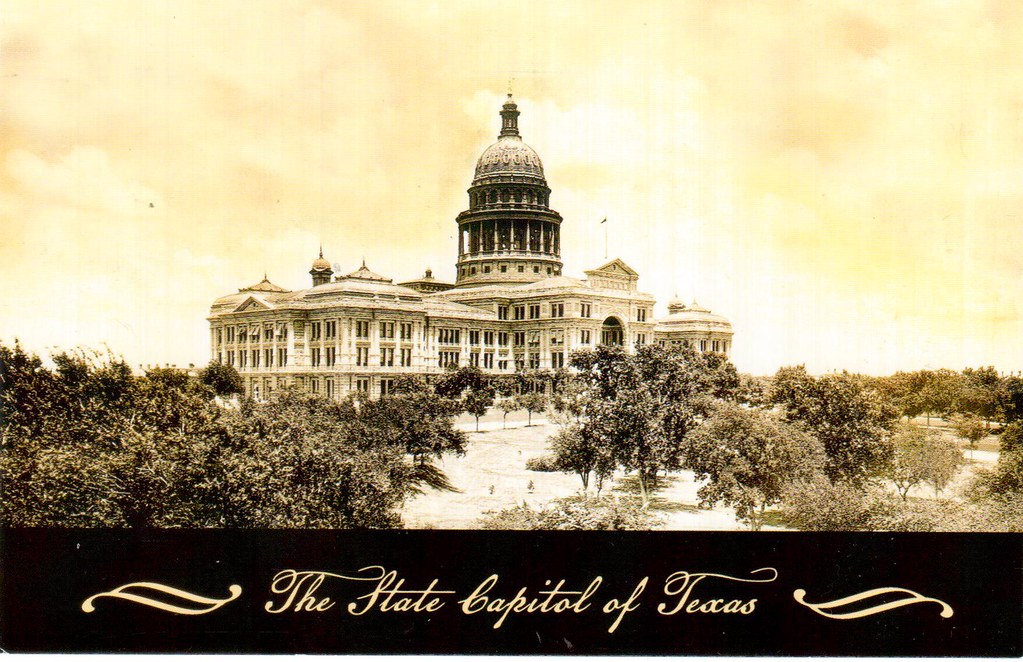#united states capitol building
Text

Overflight of the U.S. Capitol building by Germany’s Graf Zeppelin - 1931.
#landmarks#united states capitol building#united states capitol#u.s. capitol#dirigible#zepplins#graf zeppelin#washington#washington d.c.#washington dc#the 30s#1930s#1931#the capitol#the capitol building#airships#passenger airships
49 notes
·
View notes
Text






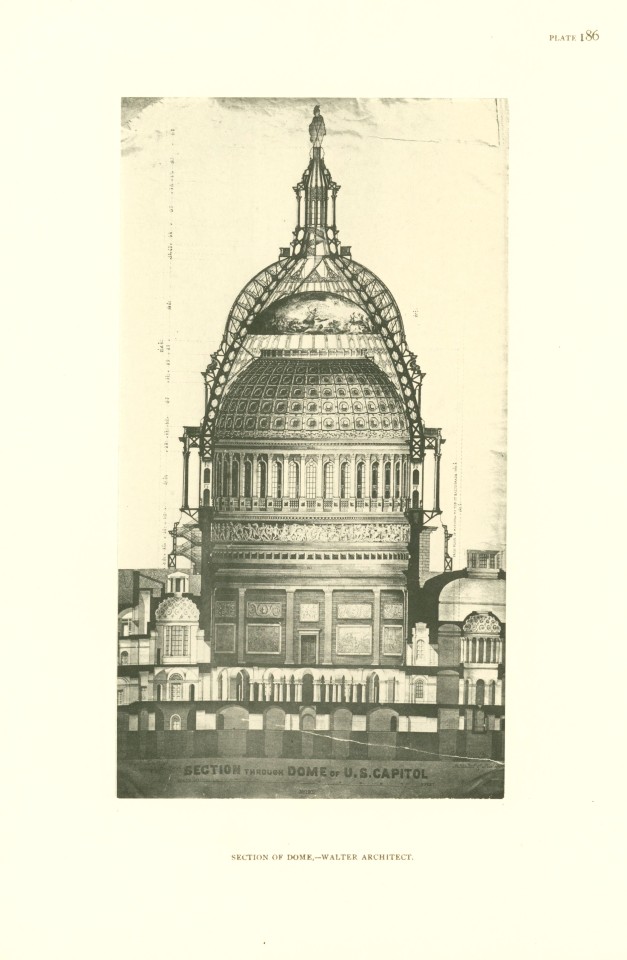

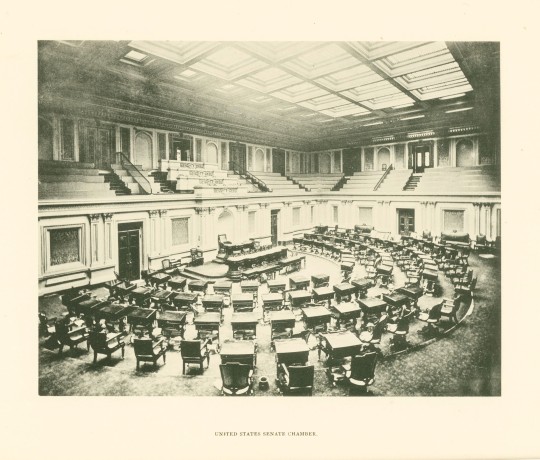
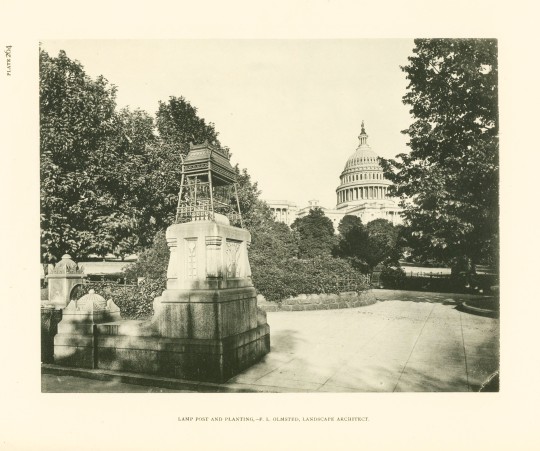
Milestone Monday
On this day, September 18, in 1793, George Washington laid the cornerstone of the United States Capitol Building. He was aided by eight Freemasons dressed in full masonic regalia marking the beginning of a period of construction that lasted seven years and the dawning of the growth of the nation. In 1792, Thomas Jefferson put out a call for architectural design submissions for the Capitol Building and was won over by a late entry from amateur architect William Thornton. Thornton’s design was officially approved in April of 1793, with the caveat that French architect Stephen Hallet would review and modify his plans as needed.
Architect Glenn Brown (1854-1932) explored the history and design of the Capitol Building in his book History of the United States Capitol, published in two volumes by the Government Publishing Office from 1900-1903. For a decade, Brown worked with numerous institutions and organizations to gather plans, illustrations, and the history of the building through architecture and interior design. He highlights that the importance of the building’s merit is not just in its construction and completeness, but its aspirations. Historian Charles Moore, secretary to Michigan Senator James McMillan, writes in the introduction, “[T]he Capitol is not a creation, but a growth, and its highest value lies in the fact that it never was, and it never will be, finished.”
View other Milestone Monday posts.
– Jenna, Special Collections Graduate Intern
#milestone monday#united states capitol building#capitol building#william thornton#Stephen Hallet#glenn brown#history of the united states capitol#Charles Moore#architecture#architectural history
22 notes
·
View notes
Text

Fireworks over the US Capitol, Washington, DC
#US Capitol#Fourth of July#July 4th#Independence Day#Capitol Building#Fireworks#United States Capitol
63 notes
·
View notes
Text

Annapolis, Maryland
My second stop was in the old city of Annapolis. Gorgeous state capitol building as well. (not as majestic as the Pennsylvania one, sorry Maryland) Annapolis is one of my favorite towns, so much fun, waterfront, so much history. I go back every time I have a chance.
#Annapolis#Annapolis Maryland#Maryland#photographers on tumblr#history#government#architecture#architecture photography#state capitol#historic buildings#east coast#travel#travel photography#historic towns#towns#United states
2 notes
·
View notes
Text

📍 Thomas Jefferson Memorial
photos from inside coming later

#washington dc#us capitol#thomas jefferson#jefferson memorial#architecture#original photography#canon eos 2000d#canon photography#lensblr#original photographers on tumblr#building photography#travel#travel photography#usa#united states#historical architecture#helicopter#aviation#aviation photography
20 notes
·
View notes
Text
Learn about the role that intellectual property (IP) rights play in encouraging innovation and creativity.

Join AIPLA and partner organizations on May 1 in Washington, DC, for a special three-hour program to celebrate World Intellectual Property Day 2024. This annual international event is an opportunity to learn about the role that intellectual property (IP) rights play in encouraging innovation and creativity. The theme of this year’s celebration is “IP and the SDGs: Building Our Common Future With Innovation and Creativity.”
Sponsored by: Representative Darrell Issa (R-CA), Chair of the House Judiciary Subcommittee on Courts, Intellectual Property, and the Internet
World IP Day 2024 D.C.
May 1, 2024 4:00 PM to 7:00 PM
Location: US Capitol Building, Washington, DC 20001
#washington dc#us capitol building#world intellectual property office#worldipday#iprights#Imagination & Creativity#conferences#united states#intellectual property
0 notes
Text

D o m e
Capitol building by me 📷 lumix zs70
#washington dc#capitolhill#capitol building#architecture#photooftheday#photoblog#photography#lumixphotography#panasonic#photographers on tumblr#beautiful photos#washington#limestone#sky#clouds#statue#united states
1 note
·
View note
Text

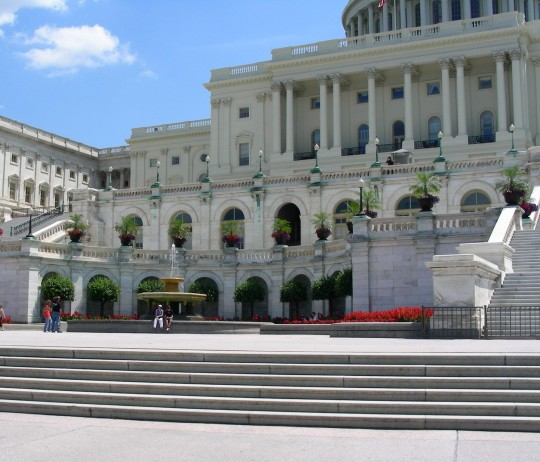
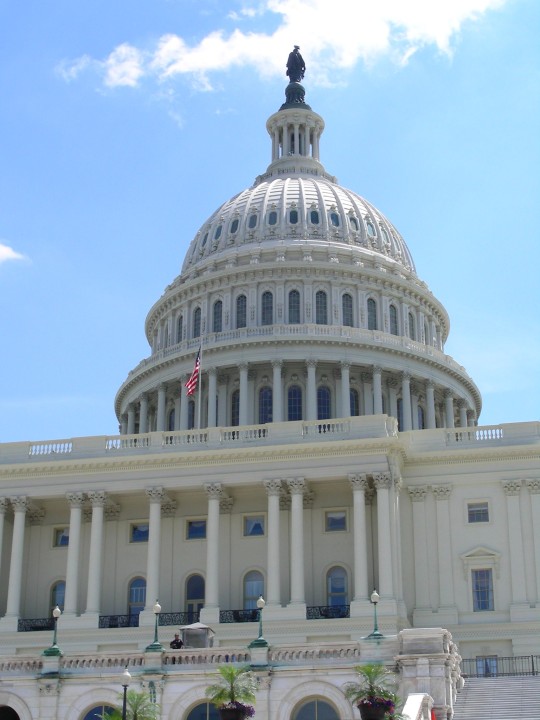


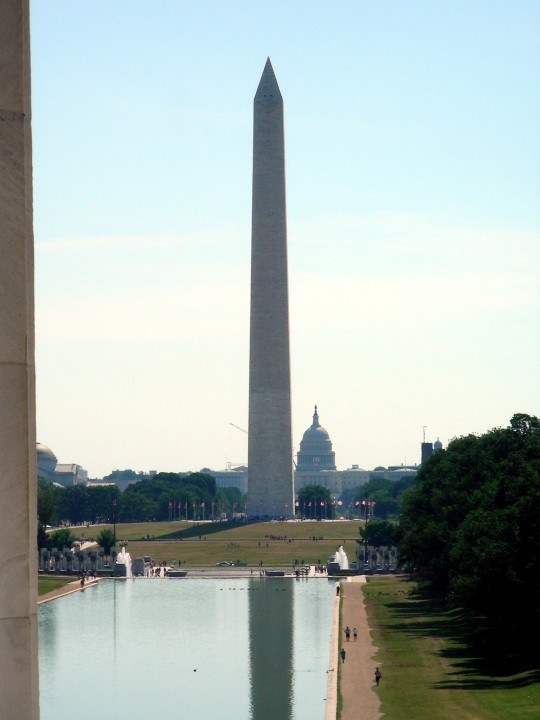

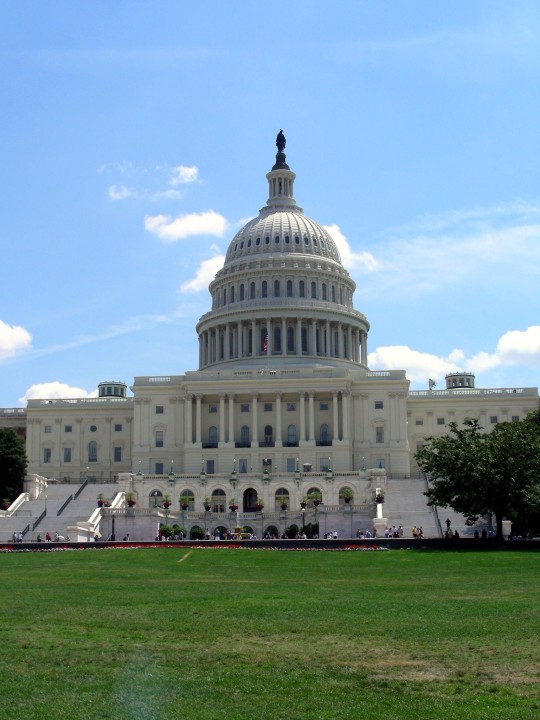

The first cornerstone of the United States Capitol is laid by George Washington on September 18, 1793.
#first cornerstone#United States Capitol#US Capitol#travel#original photography#vacation#tourist attraction#landmark#architecture#cityscape#Capitol Building#American neoclassicism#Lincoln Memorial#Washington Memorial#William Thornton#18 September 1793#130th anniversary#US history#USA#Gutzon Borglum#Washington DC#summer 2009#2019#New York City#Lower Manhattan
0 notes
Text

The United States Capitol Building January 6, 2021
0 notes
Text
SoCal Gas spent millions on astroturf ops to fight climate rules

Today (19 Aug), I'm appearing at the San Diego Union-Tribune Festival of Books. I'm on a 2:30PM panel called "Return From Retirement," followed by a signing:
https://www.sandiegouniontribune.com/festivalofbooks

It's a breathtaking fraud: SoCal Gas, the largest gas company in America, spent millions secretly paying people to oppose California environmental regulations, then illegally stuck its customers with the bill. We Californians were forced to pay to lobby against our own survival:
https://www.sacbee.com/news/politics-government/capitol-alert/article277266828.html
The criminal scheme is spelled out in eye-watering detail in a superb investigative report by Joe Rubin and Ari Plachta for the Sacramento Bee, which names the law firms and individual lawyers involved in the scam.
Here's the situation: SoCal Gas is California's private, regulated gas monopoly. They are allowed to lobby, but are legally required to charge their lobbying activities to their shareholders, and are prohibited from raising customer rates to pay for lobbying.
The company spent years secretly violating this rule, in the sleaziest way possible: working with corporate cartels like the California Restaurant Association and BizFed, the monopoly paid BigLaw white-shoe firms to procure people who posed as concerned citizens in order to oppose climate regulations that are essential to the state's very survival.
The bill topped $36 million – and it was illegally charged to its customers, the Californians whose immediate health and long-term survival these efforts opposed. SoCal Gas refuses to disclose the full extent of the spending, as do its lawyer-procurers, who cite legal confidentiality and a First Amendment right to secretly seek to influence policy in their refusal to disclose their profits from this illegal conduct.
The law firms involved are a who's-who of California's most prominent corporate fixers, including Reichman Jorgensen and Holland & Knight. The partners involved have a long rap sheet for anti-climate dirty tricking, most notably Jennifer Hernandez, notorious in climate justice history for an incident where activists claim she posed as one of them, infiltrating a campaign to force corporate despoilers to clean up their pollution in order to sabotage it, while secretly on a wealthy, prominent landowner's payroll.
Hernandez claims to care about the environment and says that her longstanding, corporate-funded, extensive campaigns and lawsuits against state environmental regulations are motivated by concern over their impact on working people. Her firm, Holland & Knight, denies serving SoCal Gas in opposing gas regulations, but it received $594k in ratepayer dollars, and submitted comments opposing the rules on its own behalf. Those comments were nearly identical to the comments submitted by SoCal Gas.
Hernandez also represents an obscure organization called The Two Hundred for Home Ownership in "a flurry of lawsuits" over California Air Resources Board rules on pollution, seeking to overturn the state's landmark climate change regulations.
Two Hundred for Home Ownership was founded by Robert Apodaca, who told the Bee that Hernandez's work for him is pro bono and not funded by SoCal Gas, but his entry into the fray occurred just as SoCalGas was founding an astroturf group called Californians for Fair and Balanced Energy (C4BES), which pretended to be an independent organization, disguising its relationship with SoCal Gas.
Apodaca is also founder of United Latinos Vote, an organization that had been largely dormant for seven years, not receiving any donations, until 2018, when the California Building Industry Association gave it $99k. The CBIA is a large-dollar recipient of donations from SoCal Gas, and its CEO insists that it was not acting on SoCal Gas's behalf when it made its unpredented donation to Apodaca.
The CBIA donation to United Latinos Vote was forerunner to a flood of corporate donations from the likes of Chevron, Marathon and Phillips 66. Shortly after receiving this cash, United Latinos Vote ran a full page ad in the LA Times, accusing the Sierra Club of pushing for anti-gas appliance rules that would harm working class Latino families.
This ad, in turn, featured prominently in advocacy by the SoCal Gas front group C4BES, funded with $29.1m in ratepayer money, which it then spent seeking to link clean appliance rules with anti-Latino racism. A quarter of California's carbon emissions come from home gas use.
SoCal Gas is regulated by the California Public Utility Commission (CPUC), which tolerated this mounting illegal conduct for many years, even as the company circulated internal memos as early as 2015 discussing its plans to oppose electrification in the state on the basis that it constituted "a significant risk to our business."
But last year, CPUC fined SoCal Gas $10m. Now, CPUC's Public Advocate office has filed a damning, extensive report on SoCal Gas's unlawful conduct, seeking $80m in rate cuts to compensate Californians for the funds misappropriated to protect the company's shareholder interests:
https://docs.cpuc.ca.gov/PublishedDocs/Efile/G000/M517/K407/517407314.PDF
Additionally, the Public Advocate is demanding $233m in fines for the company's refusal to allow investigators to audit its books and discover the full extent of the fraud.
SoCal Gas is the nation's largest utility, but (incredibly), it's not the dirtiest. That prize goes to Ohio's FirstEnergy, which handed $60m in ratepayer dollars to state politicians in illegal bribes in exchange for coal and nuclear subsidies and cancellation of state climate rules. That scandal led to GOP speaker of the Ohio House Larry Householder being sentenced to 20 years in prison:
https://en.wikipedia.org/wiki/Ohio_nuclear_bribery_scandal
There is something extraordinarily sleazy about using ratepayers' own money to lobby against their interests. SoCal Gas and its Big Law enablers have funneled millions in Californian's money into campaigns to poison us and boil us alive, and they did it while using workers and racialized people as human shields.


I'm kickstarting the audiobook for "The Internet Con: How To Seize the Means of Computation," a Big Tech disassembly manual to disenshittify the web and make a new, good internet to succeed the old, good internet. It's a DRM-free book, which means Audible won't carry it, so this crowdfunder is essential. Back now to get the audio, Verso hardcover and ebook:
http://seizethemeansofcomputation.org

If you'd like an essay-formatted version of this post to read or share, here's a link to it on pluralistic.net, my surveillance-free, ad-free, tracker-free blog:
https://pluralistic.net/2023/08/19/cooking-the-books-with-gas/#reichman-jorgensen

Image:
Maryland GovPics (modified)
https://www.flickr.com/photos/mdgovpics/6635539089/
Jackie (modified)
https://www.flickr.com/photos/79874304@N00/197532792
CC BY 2.0
https://creativecommons.org/licenses/by/2.0/
#pluralistic#socal gas#california#climate emergency#climate denial#Reichman Jorgensen#california restaurant association#astroturf#Holland and Knight#puc#cpuc#california public utility company#fraud#Alice Walton#bribery#ohio#bizfed#Jennifer Hernandez#American Gas Association#The Two Hundred for Home Ownership#Robert Apodaca#Californians for Fair and Balanced Energy#C4BES#United Latinos Vote#Chevron#Marathon#Phillips 66#sacramento bee#sacbee#Joe Rubin
4K notes
·
View notes
Video
Postcrossing US-8903378 by Gail Anderson
Via Flickr:
Postcard with an early photo of the Texas State Capitol building in Austin, Texas. Sent to a Postcrossing member in Germany.
#History#Historic#State Capitol#Building#Sepia#Austin#Texas#United States#Postcard#POstcrossing#flickr
0 notes
Text

United States Capitol
#D.C#USA#America#capitol#architecture#white#building#Washington#District of Columbia#photography#photographer#architectural photography#canon#my work#US#congress#united states congress#legislative branch#federal government#capitol hill
1 note
·
View note
Text
We're starting a protest!



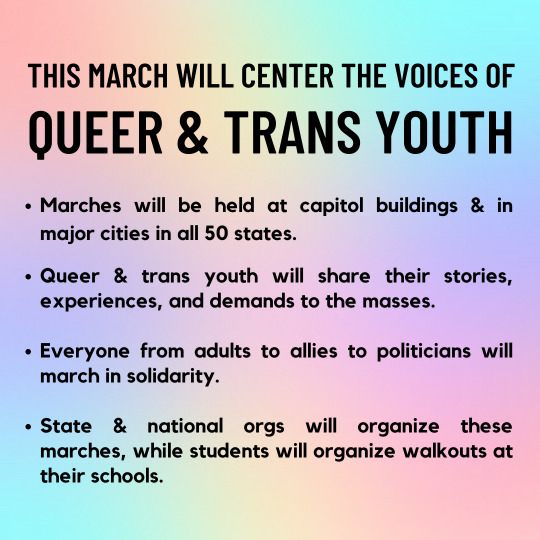
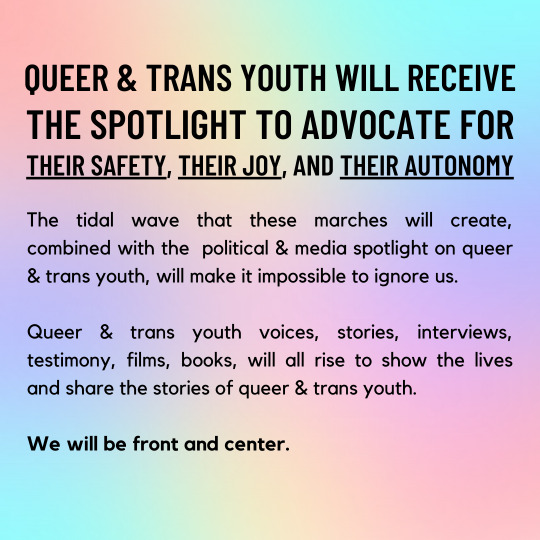

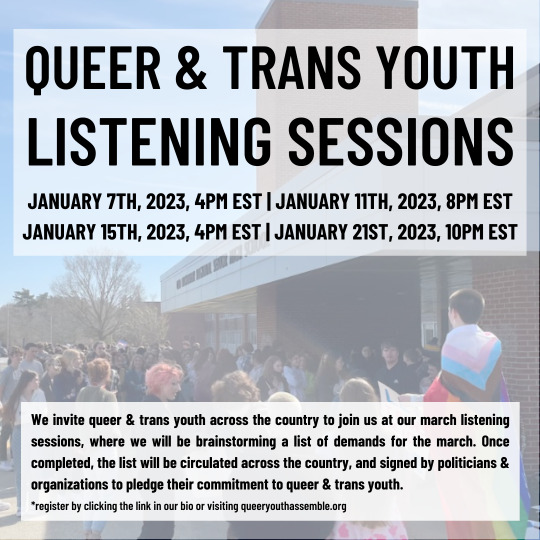

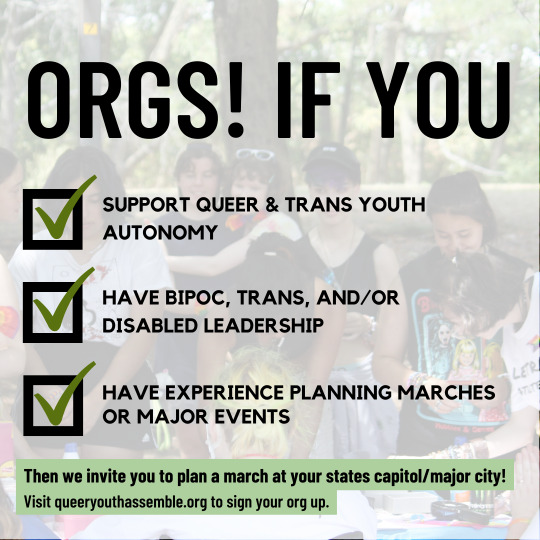

Visit queeryouthassemble.org to learn how to join us, and send us an ask or email us at [email protected] with any questions!
Photo credits and alt text available under the cut:
📸 credits, used with permission:
All art by the incredible @jesseyoungpaulson
Slide 6: @cpagsa during their walkout, March 2022
Slide 7: @lgbtatorr during their walkout, as QYA Head of Teams @alia.cusolito gives a speech, March 2022
Slide 8: @briggs_padilla from their walkout, March 2022
Slide 9 and 10: @alia.cusolito from Let Trans Athletes Play, August 2022
Alt text:
Slide 1
A digital art piece showing a diverse group of queer youth is overlayed with text reading, “March for Queer & Trans Youth Autonomy, March 31 2023, All 50 States, Uniting as One.”
Slide 2
The background is a rainbow gradient with a digital art piece showing three queer youth. The text reads, “It’s time we create one of the largest queer youth marches in history! Uniting every queer and trans young person under the common goals of safety, autonomy, joy.”
Slide 3
A rainbow gradient with a small digital art piece in the corner of three queer youth. The text reads, “The queer & trans community has been upended by a series of devastating laws, detrimental legislation, and queerphobic attacks designed to make the lives of queer & trans youth as unbearable as possible. Each and every queer & trans youth serving org has responded in their own ways, prompting walkouts, protests, legislative challenges, organizational statements, and other rebuttals in an attempt to swing the momentum. Now it’s time to unite our communities powerful work and collectively advocate for youth as one!”
Slide 4
A rainbow gradient overlayed with text reading, “This march will center the voices of queer and trans youth.” This is followed by a bulleted list saying the following, “Marches will be held at capitol buildings & in major cities in all 50 states. Queer & trans youth will share their stories, experiences, and demands to the masses. Everyone from adults to allies to politicians will march in solidarity. State & national orgs will organize these marches, while students will organize walkouts at their schools.”
Slide 5
A rainbow gradient overlayed with text reading, “Queer and trans youth will receive the spotlight to advocate for their safety, their joy, and their autonomy. The tidal wave that these marches will create, combined with the political & media spotlight on queer & trans youth, will drown the conservative narratives that have dominated the fight until now. In their place, queer & trans youth voices, stories, interviews, testimony, films, books, will all rise to show the lives and share the stories of queer & trans youth. We will be front and center.”
Slide 6
An image of students from @cpagsa during QYA’s National Queer Youth Walkout is overlayed with text and a list of checkboxes reading, “Youth! If you are an activist, are in your school’s GSA and/or have been impacted anti queer & trans youth speech, legislation, or laws then we invite you to join our queer & trans youth led march planning committees! Visit queeryouthassemble.org for more information.”
Slide 7
An image of students at Old Rochester Regional’s walkout, with QYA Head of Teams Alia Cusolito giving a speech, overlayed by text which reads, “ Queer & trans youth listening sessions. January 7th, 2023, 4pm EST, January 11th, 2023, 8pm EST, January 15th, 2023, 4pm EST, and January 21st, 2023, 10pm EST. We invite queer & trans youth across the country to join us at our march listening sessions, where we will be brainstorming a list of demands for the march. Once completed, the list will be circulated across the country, and signed by politicians & organizations to pledge their commitment to queer & trans youth. Register by clicking the link in our bio or visiting queeryouthassemble.org.
Slide 8
An image of students during the walkout in March, overlayed with text and checkboxes reading, “Adults! If you have an LGBTQ+ kid, support queer & trans youth autonomy, and/or want a safe and loving future for your children then we invite you to donate to Queer Youth Assemble! Visit queeryouthassemble.org to donate.”
Slide 9
An image of queer youth attending Queer Youth Assemble’s Let Trans Athletes Play event in August overlayed with text and checkboxes reading, “Orgs! If you support queer and trans youth autonomy, have BIPOC, trans, or disabled leadership, and/or have experience planning marches or major events, then we invite you to plan a March at your state’s capitol/major city! Visit queeryouthassemble.org to sign your org up.
Slide 10
An image of queer youth attending Queer Youth Assemble’s Let Trans Athletes Play event in August overlayed with text and checkboxes reading, “What can I do? Visit queeryouthassemble.org, share this post on your socials, and/or donate to support the march.”
#protest#activism#activists#psa#queer#queer pride#queer youth#trans#trans rights#gay rights#don't say gay#protect trans kids#lgbt#lgbtq#social issues#social justice#walkout#healthcare#trans healthcare#youth rights
1K notes
·
View notes
Quote
In defense of the Dobbs case, Trump took full credit for the Supreme Court decision and boasted he did more for the “pro-life” movement than any other president in the past 50 years. He repeated the hateful and dangerous lie that, pre-Dobbs, babies were being killed after birth. He said this three times, and Collins failed to correct him each time.
Congratulations, Licht and Zaslav. Bravo! What a wonderful precedent to set for your employees, especially the women who work at the “new CNN.”
When it came to lies, Trump was a firehose. Collins tried her best to counter, but it was like standing in a hurricane holding an umbrella. No matter how hard you try, you’re going to get wet.
Trump spent the entirety of the Town Hall repeating his Big Lie and election fraud conspiracies, which radicalized members of his base to attack the U.S. Capitol and support a failed coup against the United States. Last year, David DePape, who was in part radicalized by this lie and other right-wing media conspiracies, tried to finish the job by visiting Nancy Pelosi’s home and attacking her husband, Paul Pelosi. Trump said he was inclined to pardon “many” of the violent Jan. 6 insurrectionists, adding: “Many are great people.” These are individuals who called for the execution of his own vice president, Mike Pence, who Trump again blamed Wednesday night for not going along with the failed coup attempt.
He also managed to lionize Ashli Babbit, who was shot and killed by a Capitol Hill police officer as she was trying to illegally enter the building. Trump praised her and called the officer, who happens to be Black, a “thug.” Trump then made a both-sides equivalence between the Jan. 6 insurrectionists and BLM protesters, who were overwhelmingly peaceful and simply demanded that police officers refrain from shooting and killing innocent Black people. Trump’s comment went unchallenged.
CNN Failed America With Its Trainwreck of a Trump Town Hall
The Fascists who own CNN and make their editorial choices got EXACTLY what they wanted. No sympathy for Collins, who knew EXACTLY what she was going to be part of and played her role perfectly.
417 notes
·
View notes
Video
youtube
We Need to Make Government Bigger (It’s Not What You Think)
We need to make the House of Representatives bigger!
Now I know what some might be thinking: “Make the government bigger?” Well, technically yes. But that's missing the point. We need to expand the House to make the government work better, and be more responsive to our needs.
Put simply: The House of Representatives does not have enough members to adequately represent all 334 million of us.
Now, the House hasn’t always had 435 members and it was never intended to stay the same size forever. For the first 140 years of America’s existence, a growing House of Reps was actually the norm.
It wasn’t until 1929 that Congress arbitrarily decided to cap the size of the House at 435 members. Back then, each House member represented roughly 200,000 people.
But since then, the population of the United States has more than tripled, bringing the average number of constituents up to roughly 760,000.
Compared to other democracies, we are one of the worst in terms of how many constituents a single legislator is supposed to represent. Only in India does the average representative have more constituents.
And as America continues to grow it's only going to get worse.
Think your representative doesn’t listen to you now? Just wait.
Not surprisingly, research shows that representatives from more populous House districts tend to be less accessible to their constituents, and less popular.
Thankfully, the solution is simple: allow the House to grow.
Increasing the number of representatives should be a no brainer for at least four reasons:
First, logically, more representatives would mean fewer people in each congressional district — improving the quality of representation.
Second, a larger House would be more diverse. Despite recent progress, today’s House is still overwhelmingly male, white, and middle-aged. More representatives means more opportunities for young people, people of color, and women to run for office — and win.
Third, this reduces the power of Big Money. Running an election in a smaller district would be less expensive, increasing the likelihood that people elect representatives that respond to their interests rather than big corporations and the wealthy.
Fourth, this would help reduce the Electoral College’s bias toward small states in presidential elections. As more heavily populated states gain more representatives in Congress — they also gain more electoral votes.
Now, some might say that a larger House of Representatives would be unwieldy and unmanageable.
Well, Japan, Germany, France, and the UK — countries with smaller populations than us — all have larger legislatures — and they manage just fine.
Others might say that it would be too difficult — or expensive — to accommodate more representatives in the Capitol. “Are there even enough chairs???”
Seriously?
Look, we’ve done it before. The current Capitol has been expanded to accommodate more members several times — and it can be again. A building should not be an obstacle to a more representative democracy.
Increasing the size of the House is an achievable goal.
We don’t even need a constitutional amendment. Congress only needs to pass a law to expand the number of representatives, which it’s done numerous times.
And as it happens, there is a bill — two in fact!
Each would add more than 130 seats to the House and lower the number of constituents a typical representative serves from 761,000 to a little over 570,000. Plus, there is a mechanism for adding new members down the line.
These bills are our best chance to restore the tradition of a House that grows in representation as America grows.
It’s time for us to think big — and make the People’s House live up to its name.
414 notes
·
View notes
Text
A Terribly Organized Almost-Essay About Suzanne Collins and Why I Think She Writes
Lukewarm take because it's been years, but here it goes: if there's anything I've learned over the years, it's that Suzanne Collins is not a people pleaser. (The author, at least. I don't know her personally lol). And she be pleasing the people, that's not what I mean! I just kept hearing the same question being asked over and over again. "Why Snow? Why him?? Why not anybody else? Really?? A prequel about HIM??" It really made me think.
And don't get me wrong! I'd slash someone's tires for a Finnick prequel just like the next person (Suzanne please!), but that has never been the point of her writing. The Hunger Games novels, and by extension, the prequel book The Ballad of Songbirds and Snakes, aren't just fun fiction reads. Yeah, they're gripping. The world-building is superb. Young people are at the center of it. And all these characteristics are great, but the thing that draws us in, that keeps us consuming her media like hungry little caterpillars, is that they are, time and time again, a captivating and accurate criticism, analysis, and deconstruction of the broken systems society experiences in the real world. I can only speak from my own experience as a Mexican American woman in the United States, so take all of this with a grain of salt.
The Capitol is colorful and fun and interesting and horrible and sadistic. And it is all those things because it is a symbol of our own real-world 1%, except our own glittering Capitol members here in the real world feed us the hope that we may reach their status if we only work hard enough for long enough. The Hunger Games system never makes that claim. In fact, they are fed the narrative that the system only works because they're stuck where they are. Suzanne Collins is taking everything one step further in her writing because it is a type of satire, a critique of the things we already know. So as an author, she blows it out of proportion so that her reader will say "look at this! How ridiculous! How would someone let the system treat them this way!" And it is ridiculous, it's downright laughable that an entire society, an entire country, would let itself be oppressed in such a cruel way by just a few people in charge instead of rising up and- oh wow, yeah, I see it. She wrote about us.
Suzanne Collins just organized everything neatly into boxes- well, districts. Because every district comes with some form of product that they manufacture, but much more importantly: a class. We go in order from 1-13. District 1 manufactures luxury items and District 2 makes weapons (but mostly trains Peacekeepers), so they have the most privilege and wealth. On the other end, Districts 11 and 12 are the agricultural and coal mining districts, respectively. That's back-breaking work. Not to mention District 11 puts kids as young as 12 to work, and District 12 is poverty-stricken and starving. "But what about District 13?" You may ask, "They make nuclear weapons! Why aren't they up there with 2?" Fantastic question. If we know, and the people of Panem know, that the hierarchy is very clearly set by literal number order, why would one of the most powerful and competent districts be given more power and be put at the top? Placing them at the end lets them believe that they aren't powerful or competent. I mean, jeez, look at 12 and they're before 13? I wouldn't believe I could make it on my own either. (We know now that's not how things go down, but it's a clever power move regardless.)
But after all this, would it hurt Suzanne to give us a single book just for fun?
Yes, I believe it would, that's the whole point. We're not meant to fall for the Peeta/Katniss/Gale love triangle. We're not meant to be interested in Finnick's secrets and early life. We're not meant to want to know the morbid details of how Haymitch won his Games (with double the contestants! Ooh. Aah.) We're meant to be horrified at every turn, at every story. We're meant to ask ourselves how things got so bad, how anyone let this happen. Suzanne Collins has written wonderfully fleshed out characters that grip us and make us want to know more, but the point has never been them or even their loved ones. It was never about Katniss or Prim or Peeta or Finnick or Annie. It's always been about the systems that let this story happen, and where Suzanne got her inspiration: the very real lives we lead. The Ballad of Songbirds and Snakes shows us the same thing.
So why Coriolanus Snow? Because he is the catalyst to a broken system that only serves the powerful. If Suzanne were to write a novel about any of our much more beloved characters, then she would be writing the exact same book over and over about the same oppression happening in the same system. She does not write for the sake of bringing her very well-written characters to life, but to flesh out the poverty, the starvation, the power struggles, the horrors they experience. We know this because she writes a lot of her characters as symbols. (Coin, for instance, as the symbol for a power-hungry figurehead, or Prim as the innocent during war.)
Snow is living in a slightly different biome than what we know from The Hunger Games series. He has to make sacrifices and decisions for him and his family, but it's different. It is a view and critique from the inside looking in. This is not Katniss getting to experience the Capitol for the first time and understanding just how terribly unfair everything is. This is someone who is very aware of the way things work and playing the game to stay in power and keep their privilege. Not only that, but it's someone who feels entitled to all of it. In this novel, Suzanne plays around with power and people's position in it. What if a mad scientist was in charge? What if the creator of the thing that brought a semblance of peace was just as horrified as the reader? How far is one person willing to go for power? What if we saw the dawn of a world we're already familiar with?
So I hope she keeps writing, because I love seeing our world through her eyes and the parallels she writes from our world to hers of the injustices happening every day. Even though we'll probably never get the stories we crave, but that's okay. Keep putting those kids through hell, Suzanne.
#tbosas#The Ballad of Songbirds and Snakes#books#The Hunger Games#Suzanne Collins#reading#author#essay#spoilers#THG#tbosas spoilers#thg spoilers#i didnt have a great ending or conclusion for this my bad#i just have a lot of thoughts#finnick odair#peeta mellark#katniss everdeen#primrose everdeen#coriolanus snow#president snow#district 12#catching fire#dangerouslypassiveaggressive
61 notes
·
View notes
